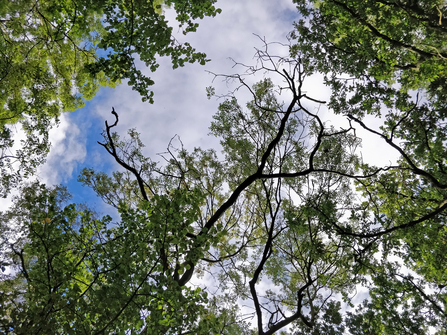Worcestershire Wildlife Trust is due to undertake a programme of tree felling along the roadside edge of Piper’s Hill and Dodderhill Common nature reserve, known locally as Hanbury Woods. The work, due to start week commencing 7th September, is being undertaken for health and safety reasons but the charity is using the opportunity to also provide breathing space for some of the wood’s veteran trees.
Eleanor Reast, the Trust’s officer responsible for the nature reserve explained “We are taking the arrival of ash dieback in the county seriously and are looking at our sites on a case by case basis.

